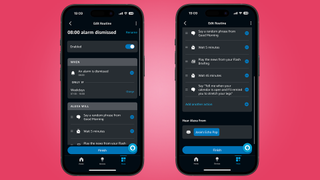We’ve been hearing about Alexa 2.0 for quite some time now, and with a mysterious Amazon devices showcase looming on the immediate horizon, we could finally be about to see the AI revolution hit smart home technology in a big way.
While we expected Alexa 2.0 sometime in 2024, Amazon didn’t deliver, skipping its 2024 Devices and Services event in favor of an Alexa-themed event this week on Feb 26 in New York City.
It’s an exciting moment for smart home fans, likely signaling the first major wave of new large language model (LLM) AI technology hitting our homes. However, the simple fact is there’s a lot that needs fixing in Amazon’s smart home – and that goes for Google, Samsung, and Apple, too, mind you – and AI might not be the solution for all of those problems.
It’s left me at a challenging juncture I’m sure many budding smart home fans have faced; can Alexa keep up with my demands? Here are five problems I’d need to see fixed to keep me on-side.
1. Improved routines
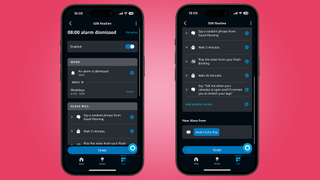
My biggest woe with Alexa is the dire state of automation. I use Alexa’s Routine feature daily, and while the functionality works pretty well for the basics, as soon as you begin to work in any more complex instructions, custom commands, or conditional logic, you’re liable to either spend hours head-scratching while working through complex workarounds and third-party solutions and potentially just end up with something that scrapes by as semi-functional.
For example, there’s a lack of conditional logic. In an ideal world, I should be able to set up complex, conditional automations within the Alexa app; if my air quality monitor detects that it’s a bit cold in my home and its geofencing detects that I’m home and a sensor device detects the windows are closed, then my heater should turn on. In the past year, Alexa’s ability to incorporate multiple triggers has improved. Even so, it’s still limited and error-prone, meaning the best option stands as the more complex, added-cost IFTTT automation ecosystem.
It’d also be especially helpful if you could nest routines, allowing you to trigger complex chains of actions simultaneously instead of in one poorly optimized clump. Again, there are workarounds here using custom commands, but these work inconsistently, especially if Alexa has a surprise update that inexplicably wipes out its standard response to the exact same prompt you’ve been using for years.
Lastly, the ability to snooze routines or only run them when you’re home (currently impossible in the UK, where Amazon’s geolocation software isn’t available) would be helpful for those of us who live between homes or with a more flexible schedule.
We’ve got a full guide for how to use Alexa automations, why not check it out?
2. Contextual responses

One of the more likely Alexa upgrades we’ll see is improved contextual responses, allowing for many improved experiences when interacting with your smart home assistant.
For instance, one of the most frequent debates I have with my non-sentient smart home sasspot is the definition of ‘resume’. Often, I’ll pause a TV show, a news briefing, or some other kind of Alexa Skill while I take a call or answer the door, and I’ll ask Alexa to resume within minutes. What happens? Instead of resuming the media, I was just listening to, Alexa will nine times out of ten play whatever was last playing on Spotify.
Contextual responses would mean that instead of jumping straight to whatever takes priority in Alexa’s programming, the assistant will recall the context of my most recent requests and make a logic-based decision. Alexa offers contextual actions for certain smart home devices; smart lights can be controlled more easily when grouped into rooms with an Echo device. However, far wider-reaching device support is necessary to really make the smart assistant… well, assistive.
It would also allow for more natural interactions between the user and the Echo device. I regularly move between my kitchen and living room and have Alexa-enabled displays in both rooms. In an ideal world, I could ask Alexa to move Netflix from my kitchen to my living room, but as of writing, I have to pause my show, close Netflix, and then ask for Alexa to resume playing in the other room. It’s a first-world problem, yes, but a problem that bugs me every day when it should just work.
Improved Follow-up Mode
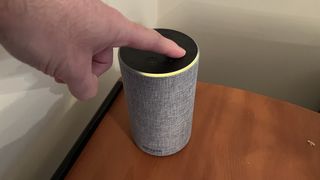
Similarly, using Alexa would be a lot less painful if Follow-up Mode was a two-way street. When the feature was announced, many thought it might mean Alexa could ask follow-up questions to understand better what the user might want and need.
Unfortunately, Follow-up Mode basically just means that you don’t have to repeat your wake word to string commands to Alexa, which is certainly handy. It’s not exactly ‘smart’ though; all that’s happening is that your Echo speaker or display continues listening for a few seconds after completing your first request to see if you have anything else to add.
An improved Follow-up Mode could see Alexa asking clarifying questions, making real-time suggestions, and allow for better Routine configuration, wherein the user can ask Alexa to ask a clarifying question mid-way through a Routine that creates different pathways for executing the rest of the steps. Similarly, using Alexa would be a lot less painful if Follow-up mode was a two-way street. When the feature was announced, many thought it might mean Alexa could ask follow-up questions to understand better what the user might want and need.
Unfortunately, Follow-up Mode basically just means that you don’t have to repeat your wake word to string commands to Alexa, which is certainly handy. It’s not exactly ‘smart’ though; all that’s happening is that your Echo speaker or display continues listening for a few seconds after completing your first request to see if you have anything else to add.
An improved Follow-up Mode could see Alexa asking clarifying questions, making real-time suggestions, and allow for better Routine configuration, wherein the user can ask Alexa to ask a clarifying question mid-way through a Routine that creates different pathways for executing the rest of the steps.
4. Improved media searching
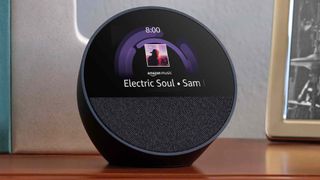
I won’t be joining the reams of conspiracy theorists claiming Alexa has “become dumber,” but I will say its ability to search for media seems to have deteriorated slightly, which could just as likely be a result of the ever-growing, terrifyingly vast swathes of content now available online.
For example, I’m a fan of Cobblestone Jazz, and I’ll often ask Alexa to play their music on Spotify. What do I get? A custom mix by Cybotron on Amazon Music. Any niche artist, track, or album is invariably skipped over for a slightly more recognizable alternative, with hilariously mismatched results at times.
The aforementioned improved handling of context would help Alexa to at least remember my preferences and make more logical decisions on what it thinks I might play, and follow-up questions where the user can provide more information and direction would also benefit Alexa’s hit rate. Regardless, something’s gotta give, so I stop accidentally blaring heavy metal instead of smooth jazz in the evening.
5. Improved language processing
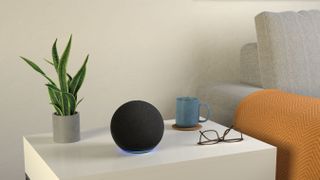
I saved the obvious one for last because, of all the things that most need fixing, this is both the most important and most likely, thanks to the inevitable incorporation of LLM smarts to Alexa 2.0.
Currently, Alexa can be almost hilariously inefficient when it comes to commands, requiring very specific verbiage to work as intended. Better yet, that verbiage seems to change as updates come and go; the same Echo Spot I’ve been using to control my Philips Hue Signe for the best part of a year used to respond to “Signe” and now only responds to “floor lamp”, and I haven’t changed the name of the device in the App.
Improving language processing would mean users won’t have to adhere to a strict, seemingly undocumented list of specific commands and product names, which would allow users to play and experiment more with the voice assistant. If I had a dollar for every time someone told me they had no idea that their smart speaker could help you find your phone or talk you through a seven-minute workout, I’d have at least enough to afford the rumored new monthly Alexa subscription.
While smart home enthusiasts have found some workarounds for a number of the improvements I think Alexa needs so desperately, many involve fiddly hacks or third-party services that your average user just might not want to tackle.
Echo devices have always been positioned more towards the ‘everyman’ than those of us who like to get down in the weeds with smart home setup, and to that end, it’s a surprise that Alexa is still as complex and riddled with awkward loopholes and quirks as it is.
With Alexa 2.0, however, that seems fit to change – hopefully, all will be revealed tomorrow at Amazon’s ‘Devices and Services’ event, so make sure to stay tuned!
You might also like
Services Marketplace – Listings, Bookings & Reviews
